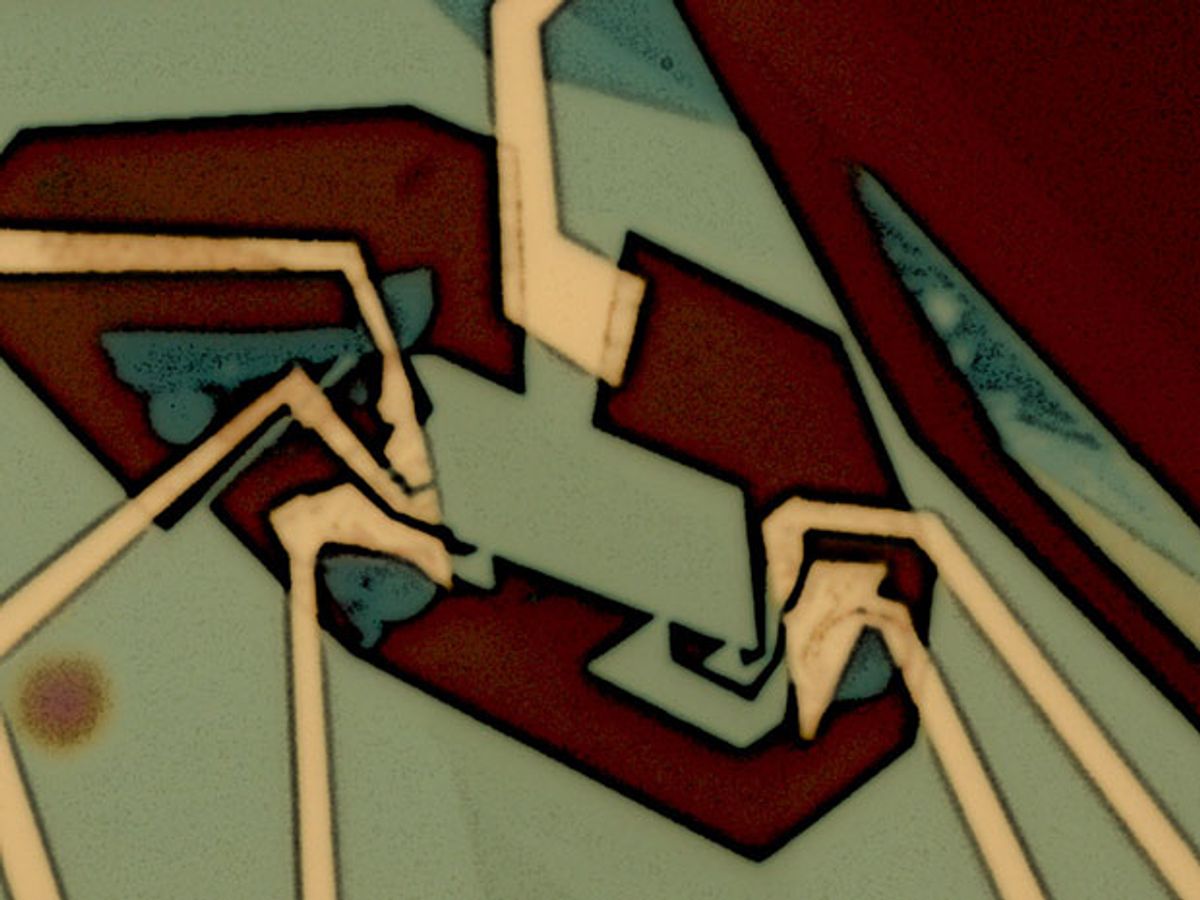Electronic devices are designed around how electrons travel through different kinds of solids. This movement of electrons can determine the material’s conductivity, its band gap, and its optical properties.
Nobel Laureate and one-time Stanford University professor Felix Bloch theorized decades ago that it should be possible to get electrons to travel through a material in a very particular way that scientists hadn’t previously considered. Bloch predicted that it should be possible to structure a material in a way that causes electrons to oscillate in the terahertz band of the electromagnetic spectrum.
This terahertz region has become known as the terahertz gap, because it has been so difficult to access even though it sits right between the radio wave and infrared radiation bands that we’ve been able to exploit in myriad ways.
Now, researchers at Stanford have realized Bloch’s theorized material. They’ve created heterostructures made of graphene and hexagonal-boron nitride that form a periodic lattice pattern of atoms known as a superlattice. In the process, they may have put us on a path to making a wide range of electronic devices including better airport scanners and solar cells.
In research described in the journal Science, the Stanford researchers demonstrated that layering graphene-hexagonal-boron nitride heterostructures in this superlattice structure makes it possible for the electrons to travel relatively long distances through the material before they are deflected by anything such as small impurities. The superlattice structure also ensured that the electrons were restricted to very narrow energy bands. This confinement, combined with their long-distance travel, cause the electrons oscillate at the frequencies they do.
It should be noted that this research did not actually produce a so-called Bloch oscillator. But it did yield a material that makes it possible for an electron to maintain its momentum and velocity over long periods—a key to eventually making a terahertz oscillator device.
What benefits would such a material provide? In the case of a solar cell, when a photon hits the superlattice material at a p-n junction, instead of the photon pushing out one electron, it could cause several several electrons to be emitted. If this material can eventually be made into a terahertz oscillator, it could eventually lead to the replacement of microwave-based scanners at airport security checkpoints. The shorter wavelength of terahertz-based scanner could reveal non-metal objects that can’t be detected currently.
Interestingly, while all of this comports perfectly with Bloch’s theory, the researchers discovered something new: another property of the material that turns the understanding of how electrons behave in semiconductors upside down.
“In semiconductors, like silicon, we can tune how many electrons are packed into this material,” said David Goldhaber-Gordon, a professor at Stanford and co-author of the paper, in a press release. “If we put in extra, they behave as though they are negatively charged. If we take some out, the current that moves through the system behaves as if it’s instead composed of positive charges, even though we know it’s all electrons.”
The graphene–hexagonal boron nitride offers a twist on this property: When more electrons are added to this material, it produces particles of positive charge; removing electrons has the opposite effect.
This reversal in the way electrons behave as they are added or subtracted from the material could lead to more efficient p-n junctions, the points at which p-type and n-type semiconductors are joined together to form the basis of many of the electronic devices we are familiar with. Menyoung Lee, a collaborator on the study who conducted the research as a graduate student in the Goldhaber-Gordon Group, believes that this nano-engineered material offers a very clear application of Bloch’s theory of solid-state physics.
Goldhaber-Gordon further envisions this work leading to a better understanding of how electrons travel through a material, and plans to leverage that understanding to create extremely narrow beams of electrons that are then send through superlattices. He believes that this could open up an entirely new field that he has dubbed “electron optics in 2-D materials.” The beams of electrons would travel in straight lines like a beam of light following the laws of refraction.
Goldhaber-Gordon added: “This is going to be an area that opens up a lot of new possibilities, and we’re just at the start of exploring what we can do.”
Dexter Johnson is a contributing editor at IEEE Spectrum, with a focus on nanotechnology.



